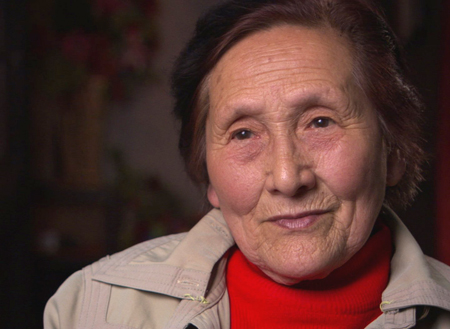|
Reviews of Recent Independent, Foreign, & Documentary Films in Theaters and DVD/Home Video
Directed by Bill Guttentag & Dan Sturman Written by Guttentag, Sturman & Elisabeth Bentley Produced by Ted Leonsis Guttentag & Michael Jacobs Edited by Hibah Frisina, Charlton McMillan & Michael Schweitzer Director of Photography, Buddy Squires Music by Philip Marshall Language: English, Mandarin & Japanese with English subtitles USA. 90 min. R Rating Released by THINKFilm in association with HBO Documentary Films With Mariel Hemingway, Michelle Krusiec, Jürgen Prochnow, Woody Harrelson, Chris Mulkey, Hugo Armstrong, Rosalind Chao, Stephen Dorff & John Getz It is possible that the 20th century was not the most savage in the history of man’s inhumanity to man. But it was the first where witnesses, survivors, victims, and perpetrators can personally recount infamous events in combination with visual evidence to an outside audience across years and continents. Step by step, the reign of terror in China’s then capital, Nanking, is documented here in time for the 70th anniversary of Japan’s brutal invasion. Without polemics or histrionics, the events are told in chronological order through an astounding array of archival and family photographs and newsreel footage, including film smuggled out of China during the war, as well as through the emotional testimony from elderly witnesses, who were as young as seven at the time, and frank admissions from Japanese veterans. These witnesses describe the sights, sounds, and smells of how the Japanese Army’s notoriously bloody “three all” policy – loot all, kill all, burn all – was carried out. Surrendered Chinese prisoners-of-war were systematically slaughtered, falsely justified by the Japanese as necessary due to food shortages and threats of rebellion, followed by the free-wheeling murders of escaping and hiding civilians, including children, and the mass rapes of women, girls, and boys. All together in six weeks, from December 1937 through February 1938, more deaths resulted here than from the American bombs on Hiroshima and Nagasaki according to many sources still not officially acknowledged by the Japanese government. Amidst the non-stop horrors and cruelties, recounted in excruciating detail, are portraits of individuals with unusual courage - missionaries, professors, doctors, and, most surprisingly, Nazi businessmen. These Westerners, who chose not to flee with the Chinese and foreigners with the resources to do so, formed their own International Committee for the Nanking Safety Zone. Around the grounds of their hospitals, homes, and schools, they sheltered some 200,000-300,000 Chinese (by one estimate half of the city’s remaining population) from the 50,000 marauding Japanese soldiers. Armed only with their international status and moral indignation, they succeeded to a remarkable degree despite constant raids and attacks on their self-declared neutral territory. The narration is mostly culled from the letters and diaries of this extraordinary group of two dozen European and American expatriates. The focus is on two particularly unsung heroes: Minnie Vautrin, the head of the Ginling College for Women, whose words are read earnestly by Mariel Hemingway, and John Rabe, the head of both the local Siemens office and Nazi party. His diary entries, discovered decades later, are reenacted conversationally by Jürgen Prochnow. Vautrin tried to protect as many women as possible from the constant threat of rape, while Rabe ironically brandished his Nazi connection as an ally of the Japanese government to appeal for civilized behavior. Some of the same testimony and images were used in Christine Choy and Nancy Tong’s shorter documentary from 1987, In the Name of the Emperor, which inspired Iris Chang to write The Rape of Nanking: The Forgotten Holocaust of World War II, which in turn inspired this film that is dedicated to her (she died in 2004) as well as to the victims. Chang’s book provides more of the context on how Japan’s militaristic imperialism led to this inhumane catastrophe and how post-war amnesia and Cold War exigencies overtook the memories. (Nanking is very careful not to condemn all Japanese, then or now.) The earlier film also included the gruesome footage of atrocities, taken by one of the missionaries, Reverend John Magee, which was then promulgated widely in the West by a YMCA representative. Their efforts helped spur the war crimes trials in Tokyo and Nanking of some Japanese commanders without imperial connections, referred to briefly in this film.
The contemporary descriptions are so shocking and vivid that the actors’ voiceovers would have been effective enough. Instead, the film stages a
reading of the narration, opening awkwardly with the behind-the-scenes gathering of the actors before they settle into their seats to talk directly
to the camera. While the Ken Burns template for making documentaries about historical events via intense close-ups of photographs and personal
perspectives doesn’t have to be the only approach to bring past events alive, the choice by the film's directors to portray historical figures is
oddly more
distancing than bringing the individuals to life.
Nora Lee Mandel
|

